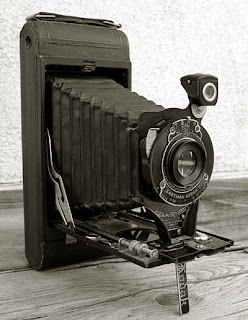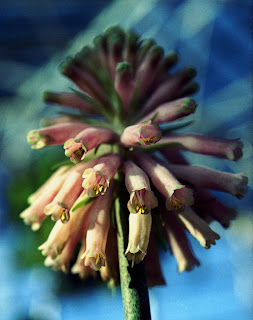I originally got seriously interested in photography in the mid-1960s. I then took a thirty year break. What brought me back was a desire to embellish my web design efforts with some photographs. I picked up a little Olympus D360-L with a whopping 1.3 megabyte sensor. That proved perfectly adequate to my purposes, but what I also discovered was that photography had been completely transformed since I was last involved with it. The process had become miraculously simple and quick. The little Olympus let me make super-close macros effortlessly, and everything was properly focused and exposed with almost no effort on my part. As I got more involved in photography for its own sake, I started using the digital camera to make small
graphic studies of things around the house.

I gradually moved my photo efforts outdoors into the
Chihuahuan Desert that surrounded our home in the country north of Las Cruces. I continued making graphic close-ups, but also extended my range a bit to include desert plants and animals, as well as a bit of scenic work.

In my wanderings around in the desert I often trained my camera on ancient rock art finds. Mostly for that subject, I decided I needed a wide-range zoom that could help me fill the frame with petroglyph panels that were sometimes difficult to access. I therefore acquired up a Nikon Coolpix 5700, a digital camera that was at the time pretty close to the state of the art with a 5 megapixel sensor. I think I paid about $900 for the camera, which seems incredible now.
Around the same time, I also picked up a couple cheap old film cameras from local thrift stores, and then a couple more off ebay. Gradually, my interest in the old film techniques and equipment overtook my devotion to the new digital technology. I now have a little pocketable Canon that gets used mostly for taking pictures of my old film cameras.







































